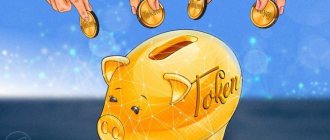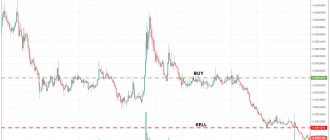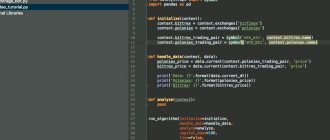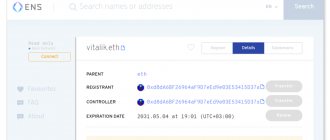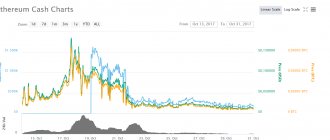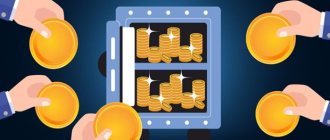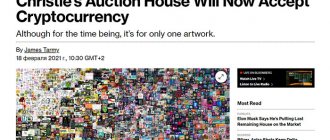Money makes money - this expression perfectly suits the phenomenon described in the article. It is present in any market, but in the cryptocurrency market, pumpers are especially active in clipping hamsters. We will analyze what a pump and dump of cryptocurrencies is, how to recognize the first signs of pumps, who carries them out and for what purpose.
Table of Contents
- What is a pump and dump on the stock exchange?
- Stages of the Pump and Dump scheme Planning and accumulation
- Active advertising
- Sale
- Collapse
What is a pump and dump on the stock exchange?
“We will help you make money, join us!” — today the Internet is replete with advertisements for Telegram groups or chats that are actively involved in pumping cryptocurrencies. Some of them have thousands of participants who are looking forward to quick and easy enrichment. If you go inside, you can often find messages here: “Let’s go higher, the price is far from the maximum!”, “We are increasing volumes, we are working!”, “We are throwing bots into the work!” etc.
The most popular channels in the English-speaking environment are PumpKing Community, Pump Notifier/Trading Signals, Crypto4Pumps, We Pump and others. Their organizers sometimes involve tens of thousands of participants when conducting their pumps. Often, lovers of easy money are lured into private chats with paid access, in which they promise to share profitable signals.
So what kind of beast is this pump and dump?
It's simple. A cryptocurrency pump is a coordinated action aimed at maximizing the price of a token. And then at the peak, when the token is actively bought by third-party buyers attracted by the hype and rapid rise in price, pumpers sell their coins and make money from it. As a result, after the pump there is an inevitable dump. A cryptocurrency dump is a sharp drop in price to the previous level, and sometimes even lower.
Since the cost is artificially inflated, the scheme is clearly fraudulent. It is considered illegal on traditional exchanges. In cryptocurrencies, where the situation is currently practically uncontrolled by regulators, the situation is worse.
A pump can be carried out either by one person who has sufficient capital for this, or by a group of players who do it in concert with each other. Cool coins with huge capitalization, for example, BTC, Ether, Monero, are rarely pumped today; this would require huge funds.
It’s easier to overclock cheap tokens like Nextcoin, Magi Coin, Bytecent, VCash and others like that. To do this, they most often guess the time when some current news on the selected cryptocurrency should appear. This could be a website update, a new version of the wallet, an improvement in the operating algorithm, etc. This way the pump will look more believable.
The main goal of the pump is to attract hamsters and sell them the required amount of cryptocurrency at an inflated cost.
Know your history. Pumps of the last century
The first pumps were carried out quite a long time ago, as clearly illustrated by the films “Boiler Room” and “The Wolf of Wall Street.” This was done by means of “cold” calling clients in order to “sell” the so-called “penny stocks” - cent or “junk” shares of little or completely unknown companies. As soon as there were enough buyers to raise the stock price, Wolf and his “jackals” sold those same shares, which led to a sharp decrease in the value of the asset, up to 95%. Quite a simple and working scheme.
Stages of a Pump and Dump circuit
It is impossible to increase the price from scratch. The process itself follows a preliminary stage. Let's look at how to pump cryptocurrency one by one.
Planning and accumulation
First, the organizers, or as they are also called, insiders, determine the coin that will be pumped on the exchange. Then they begin to buy it gradually and carefully so as not to arouse suspicion. The procurement can last days, weeks or even months. Pumpers at this stage try not to burn up the volumes being collected and not to influence the price increase. At the slightest sign, they may even sell some of the coins and buy them back later. Thus, a large number of tokens are accumulated in one hand.
Active advertising
As soon as the accumulation stage comes to an end, a concerted effort begins to drive the price up and, as soon as it reaches the desired limit, actively advertise the token. For this purpose, different platforms are used: forums, spam mailings, telegram channels. It is through the latter that pumps in the cryptocurrency market are most often coordinated.
As a rule, channel participants are told in advance what time and on what exchange the pump will occur. The coin is announced at the last moment. After which everyone who wants to take part in the pump begins to actively buy it. The value of the token continues to rise in the wake of the hype.
In the middle of the wave, as a rule, but not always, a small pullback begins. At this time, pumpers continue to disperse the excitement, attracting participants from outside. There is no question that this is a pump. The token is actively praised on forums, chats, and troll boxes. They talk about how undervalued it was, what great prospects the coin has in the future. The calculation is carried out mainly on users who are poorly educated in the exchange business and who are afraid of missing out on a chance.
During the process, pumpers set up walls for buying and selling tokens in order to keep the rate within the required limits. They are constantly rearranged to the required levels either manually or with the help of bots.
Walls are nothing more than orders with huge volumes that prevent the price from rising above or falling below a certain limit. With their help, they turn the course in the right direction.
Sometimes a pump immediately looks like one huge green candle, which immediately ends in a dump without a new wave of growth. As a rule, it’s already too late to buy on such a candle. Pumpers on the channels justify this development of the situation with third-party events: either the Bitcoin exchange rate is to blame for them, or problems on the stock exchange.
Sale
Attracted by the hype, investors and traders are rushing to buy the cryptocurrency before it, in their opinion, has completely risen in price. This is where the golden time of pumps comes. As it is also called - hamster grooming time.
Hamsters in exchange jargon are inexperienced traders who are caught up in the hype and buy tokens at highs (high price), when the price is maximum, for fear of missing out. And then they sell it - at a loss.
The organizers of the event begin to sell off, or, in other words, drain, their coins on the overheated market. In order not to arouse suspicion and not to collapse the price of the token prematurely until they receive the desired profit, they do this gradually and carefully. Sometimes they even start buying in order to support newcomers’ faith in a further medium-term price increase.
Collapse
Eventually, when supplies are mostly sold out, pumps no longer drive interest or the value of the token. This is where the dump comes in. Players, unaware that they have become victims of a pump and dump scam, are confused and trying to sell their assets. However, no one is interested in them anymore.
Any pump ends with a large-scale drain. The price is actively rushing down. Traders sell tokens either at a loss or are left with a bunch of coins waiting for the time when they rise in price again. The second option, by the way, is much better, since the likelihood that the token will soon be pumped again is high. By the way, the pumpers themselves advise this on their channels.
Formations
The formations for this strategy are set as standard: a rebound or a breakout of the level occurs.
Based on this, the following models are distinguished:
- A short from levels occurs when there is a round sum or level on the chart. The entry point is in the rollback zone, which is displayed in the form of small candles on low volumes.
- A short break through the level is observed during a sideways movement with fading volume. Entry into trading is carried out by breaking this level downwards with increased volumes. It is recommended to open orders after 12:00 New York time.
- A short with a vertical movement occurs when more than 3 candles are formed on large volumes in the middle of the day without pullbacks. In practice, after them a reversal or rollback is formed. The more the cost has increased, the stronger the drain will be. A good sign is if the candle forms at the end of a bar with a large shadow.
Types of pumps
There are long and short pumps. The first ones can last a day or more. The second - from a few minutes to half an hour. And if you can still try to make money on the former, then it is better not to mess with the latter at all, but to save your nerves.
Short pump charts most often represent two candles - the first green one for takeoff and immediately followed by a similar one for drainage, where a simply ignorant person does not have time to either enter properly at a normal price or exit.
In long pumps, in addition to explosive growth spurts, corrections are also observed. Experienced traders who have a good understanding of the market can make money in such situations. However, it is worth considering that since the price is artificially inflated, many chart analysis tools simply will not work here.
Fundamentals
When looking for assets to open short trades using a pump strategy, you need to select companies with low fundamentals.
These include:
- PS indicator is greater than 2;
- low level of sales or their complete absence;
- growth or decline in earnings per asset (EPS);
- the degree of transformation of funds in the market;
- income received by the company from each sale (Profit Margin);
- product profitability;
- return on capital;
- Operating profit;
- presence of cache;
- company debts;
- total liquidity ratio;
- net income from common shares;
- sales volume and net profit;
- ratio of assets and debts;
- existence and size of liabilities;
- generation of cash from the main activity;
- free financial flow - funds that remain at the company’s disposal after fulfilling all obligations.
When analyzing these indicators, you need to take into account the type of transactions being opened. If you are looking for long assets, you need to pay attention to companies that create funds for investors; if you are looking for short assets, you need to pay attention to companies that do not create financial flows.
How to find out when there will be a cryptocurrency pump
Many people are interested in how to recognize a pump and dump and not fall for the bait or, on the contrary, make money from it. The classic pump scheme most often looks like this.
As you can see, at the first stage the pump slowly gains position. The cost of cryptocurrency, if it fluctuates, is very little. Then, at the second stage, the token is actively advertised, and the price rushes up on a wave of interest. As a result, the manipulator sells off its reserves, and the price, which is not supported by anyone, flies rapidly down.
Results
The cryptocurrency market repeats the history of the classic stock market - the same laws, the same machinations (albeit with the addition of new nuances). Trying to make money on Pump and Dump schemes in the crypto world is risky and in many ways akin to playing in a casino - in the end, its organizers still win. So you can “connect to pumps” only if you have free funds that you are ready to easily part with.
Best regards, Alexey Vergunov TradeLikeaPro.ru
Pump on the cryptocurrency exchange - examples
For clarity, here are a couple of examples of graphs that show the cryptocurrency pump process. We won’t go far and take Bittrex.
In this example, they pumped the Bytecent coin (BYC). Here you can clearly see the process of gaining a position, then a sharp rise and, without any adjustments, an equally dizzying loss. This is the so-called short pump.
In this example, pumpers accelerated the price of Nextcoin. Here the process has already stretched out over a longer period of time.
Preparatory work is the foundation of any pump
In parallel with the gradually increasing purchases, the organizers are doing the following things to warm up and brainwash the public:
- Creating fictitious or exaggerated facts about the company's activities or its prospects;
- Placement of all kinds of announcements and advertisements related to the frantic growth, screenshots with drawn profitability and turnover:
Large candles and high returns are some of the many signs of a pump
- Information about the next phases of the pump, the exact time, etc. It is after this that the preparatory work ends - the calculation is made that everyone who could has already taken the bait and it’s time to act.
- Next, the organizers post messages in the spirit of: “15 minutes before the start - get ready, we are starting.” In this way, they encourage the crowd to make unreasonable purchases - the pumpers themselves are already preparing to exit positions and take the difference from the subsequent growth.
By the way, there are also those who are trying to sell “signals” and “tips” to cryptocurrencies that will soon be pumped. Of course, after receiving the coveted $$, the insider suddenly evaporates, and the pumps never happen. Indeed, why would it be - after all, the money arrived on its own, so why bother yourself and others?
What about exchanges?
Cryptocurrency exchanges are now starting to actively combat this fraud scheme on their own. The first platform to take steps in this direction was Bittrex. And not without reason. This is the exchange that pumpers have chosen the most.
At the end of November last year, the exchange sent out warnings to users that they would block accounts for participating in pump and dump schemes. In addition, applications that were more than 28 days old were deleted. The minimum placement amount was raised from 50 thousand satoshi to 100 thousand.
Summarizing…
Whether to participate in the pump or not is everyone’s business. The main thing to remember is that during pumps, profits are made primarily only by pumpers who are in control of the situation. Moreover, they are not always in the planned volume. What can we say about ordinary traders who are only trying to predict the development of events.
They may tell you when the pump starts, but when it ends, you are unlikely to know. And considering that the active phase of the pump in many cases lasts several minutes, few people manage to independently predict when the drain will begin. It depends on your luck.
As for the channels that send signals to the pumps, they should be selected with great care. Before you start trusting pumps, watch from the outside how the situation develops. On forums they often complain that the administrators of such channels give a signal to buy, but by this time the coin turns out to be pumped almost to the maximum and no matter how quickly they try to buy it, it is impossible to do this profitably. Traders simply remain in the red.
Before you decide to invest money, find out as much as possible about this token, study the charts, and research the market. When there is no time for this, it is better not to rush headlong. If it happens that you bought coins but didn’t have time to sell them profitably, wait for the next pump.
The pumpers themselves do not find anything reprehensible in their actions and assure that manipulation is present in all markets and in all spheres of life.
Trading Rules
Novice traders often make the same mistake - they begin to open shorts on securities whose growth was less than 50%. Such transactions do not bring profit. The stock should rise by an average of 100%. You can open orders on green candles only after a trend reversal.
Risks must always be identified. The optimal amount is 5% of the deposit. Try not to exceed this limit so as not to go into the red.

